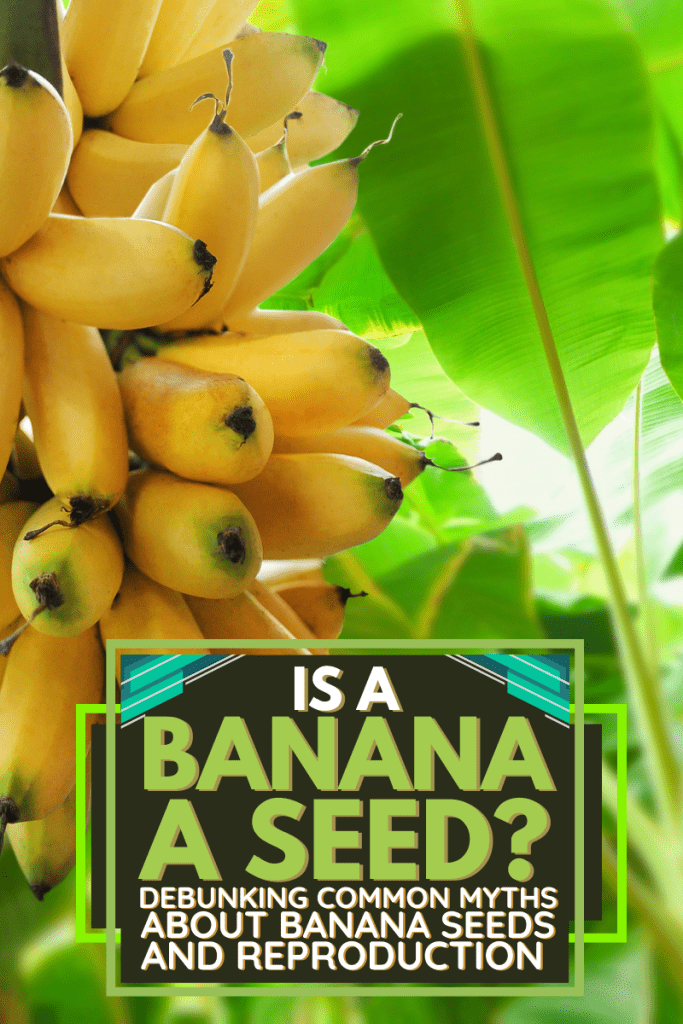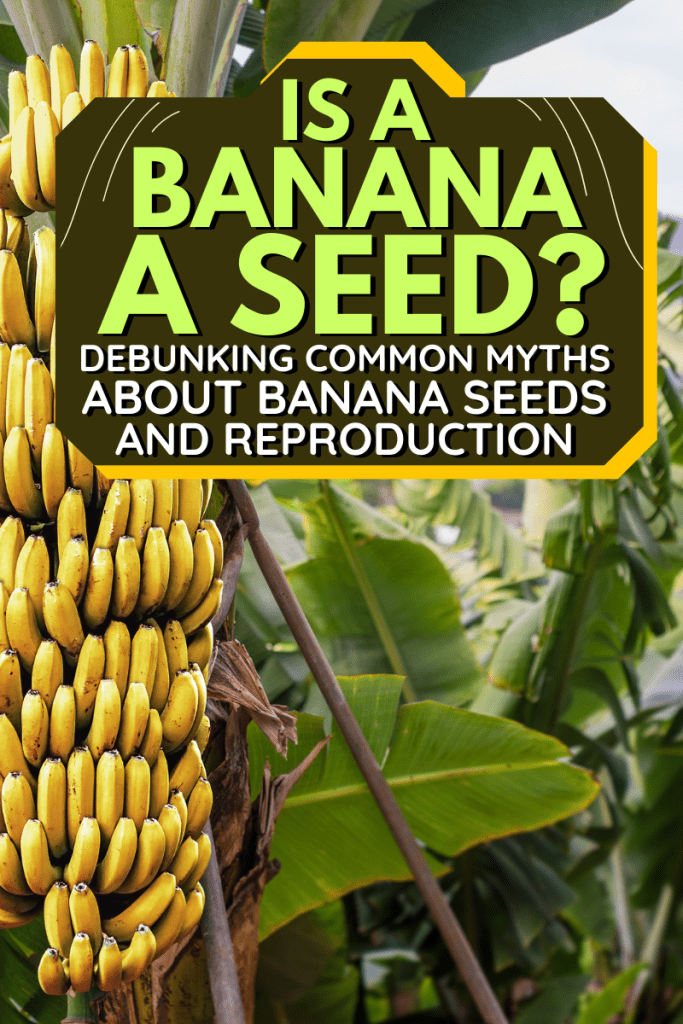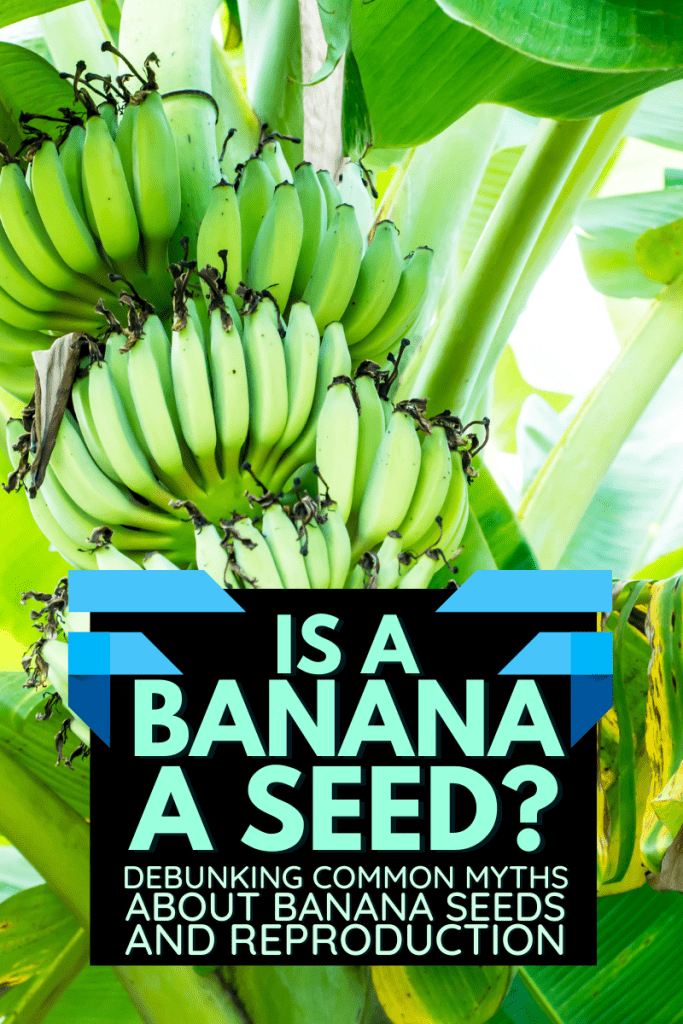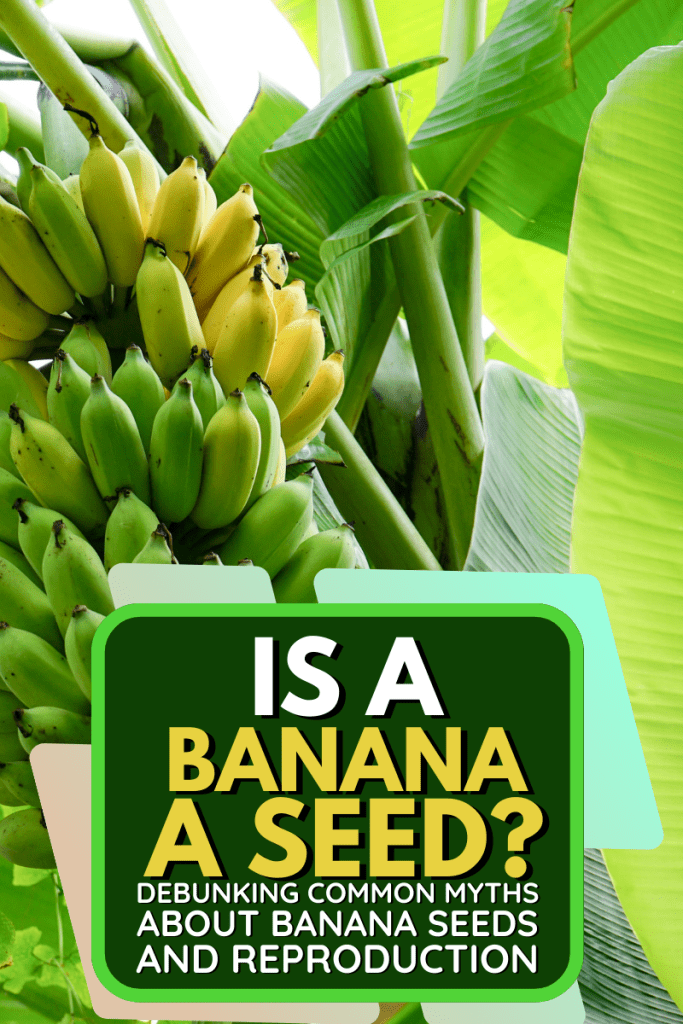Determining what type of plant your banana is can sometimes be confusing. For example, have you heard that a banana is a seed and wonder if this is true? Well, we've done extensive research on the topic and have the answer.
Although bananas may have tiny seeds, they're not considered a seed. A common misconception regarding bananas is that they reproduce by seed, but they actually reproduce asexually from the parent plant.
The banana plant or banana tree is considered an herb since it has a succulent tree stem versus a wood stem.
In this article, we will discuss how to grow bananas and discuss what type of plant they truly are. Whether you're new to growing bananas, love to eat them, or are just curious, we're here to help. With that said, let's dive right into this topic!

Are Bananas Considered A Seed?
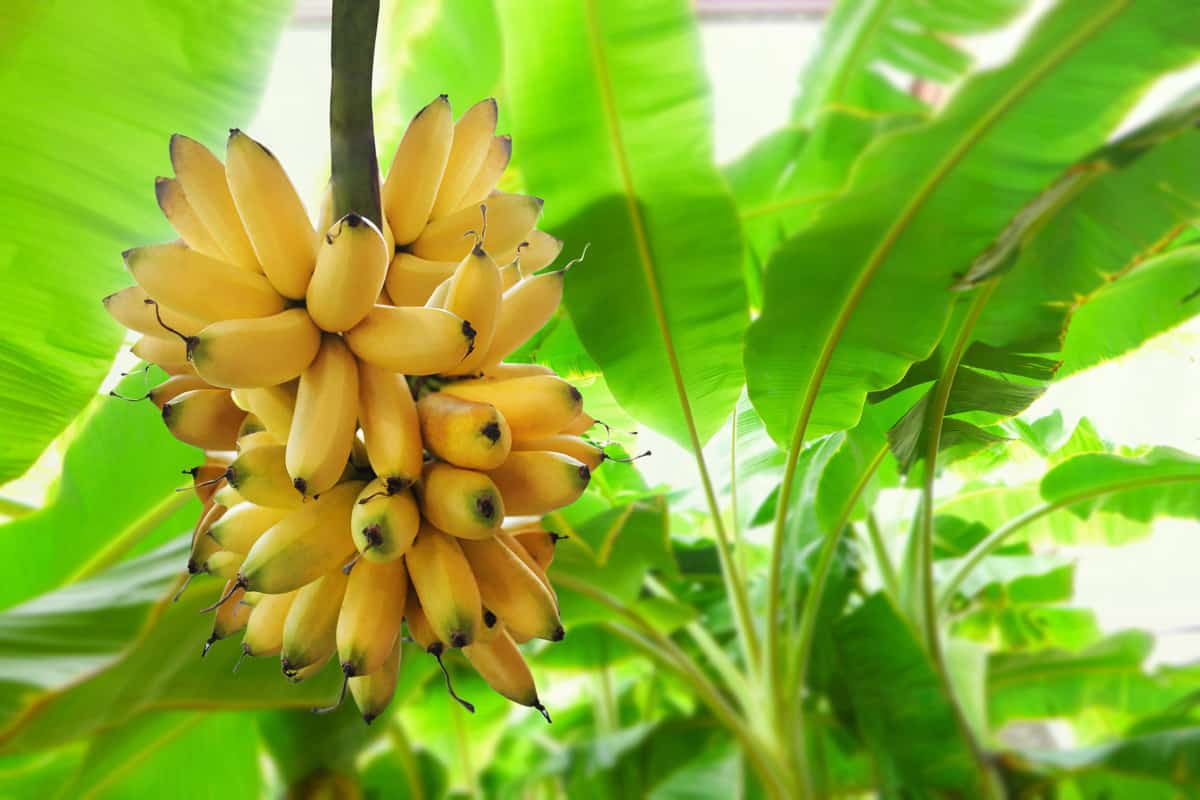
No. Even though bananas may have tiny seeds, they are not considered a seed. Generally, this fruit falls into the herbaceous plant category as it grows from a root.
Banana plants reproduce asexually, stemming from the parent. For example, your banana plant will produce through a reduced underground stem called the rhizome.
This underground stem essentially takes nutrients from the parent banana plant, uses it to grow independently strong, and then sprouts and forms more bananas.
Because of these underground rhizomes, gardeners can easily propagate banana plants, turning one banana tree into many.
It's worth noting that banana seeds have been reduced to tiny specks in the fruit over time. Unlike an apple seed or one from a larger, rounder fruit, your banana seeds don't serve many purposes.
You cannot remove the tiny seeds from a banana and try to grow a new plant. Of course, bananas can be propagated through their underground rhizomes, also called suckers, so that's a great way to start the party.
What Do Banana Seeds Look Like?
Banana seeds typically resemble little black dots. If you've ever cut open a banana and then divided it into pieces, you'll see the seeds inside.
These tiny seeds aren't hard or chewy and usually go unnoticed. Experts say these seeds are not functional because they're so small.
If you were to try and plant them, the seeds of a banana would not develop but rather decompose into the soil. Because of their immaturity, banana seeds can't become a secondary or daughter plant.
However, just like a regular banana, you can use them for cooking or baking. People usually keep the banana seeds as they are, using the entire piece of banana for their recipe.
Do Bananas Have One Seed Or Many Seeds?
The number of seeds can vary, often filling the interior portion of the fruit.
According to Fruit Information, red and yellow banana varieties tend to have the most seeds inside them. Specifically, your red or yellow banana could have as many as 20-30 seeds if grown in the wild.
In contrast, commercially grown bananas only tend to have about nine seeds per bunch, which is a stark difference. Wild bananas will always be filled with more seeds than those grown by commercial farmers.
You also want to remember that bananas are asexual. Additionally, their true seeds are not seeds at all. Instead, these are bulbous sacks beneath the soil, which grow directly from a mature parent plant.
Unlike many fruiting plants, your banana tree won't depend on others to make fruit or other plants. You can plant a banana tree and watch it grow. It should repopulate without assistance.
Do Banana Grow On Trees?
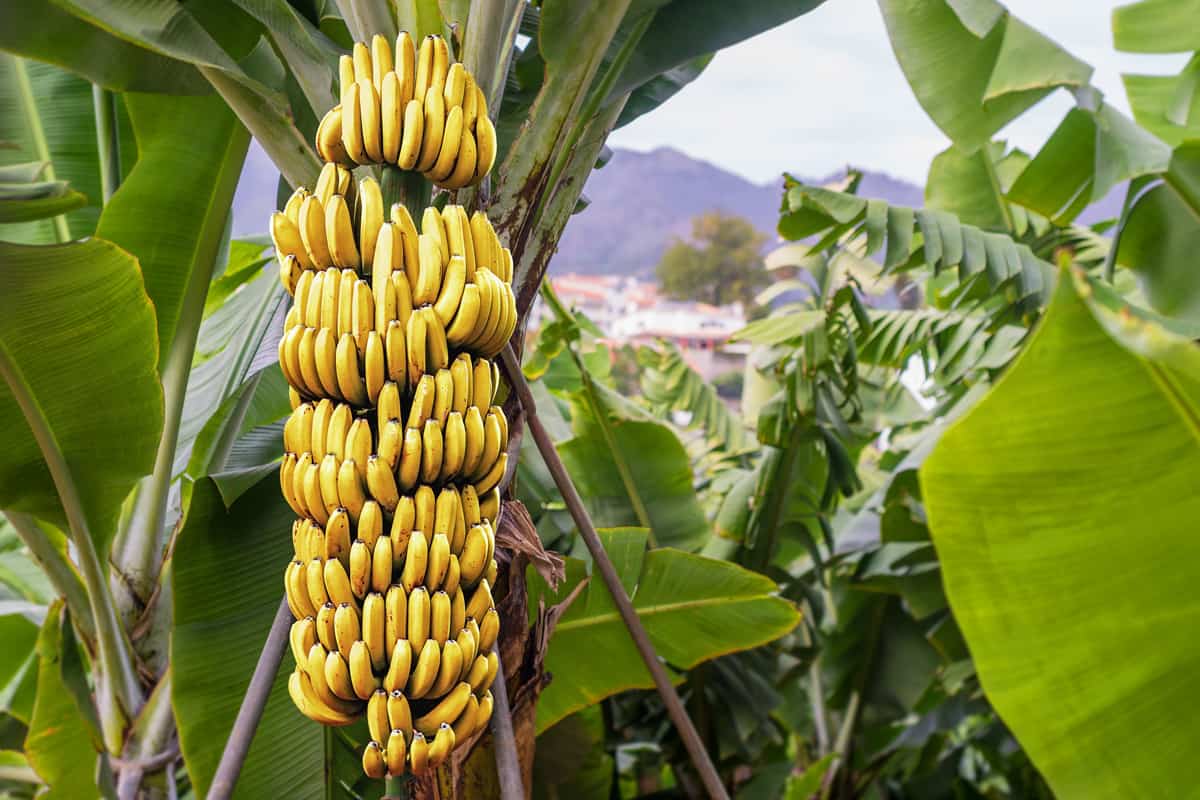
Bananas often are considered to grow on trees. However, if you want to go by technicalities, they are herbs distantly related to lilies and orchids. Bananas also have a relation to ginger, so again, they're not closely tied to tree species.
Again, the shape and growth patterns of banana plants resemble a smaller tree, so visually, they appear tree-growing. According to the Rainforest Alliance, a banana plant grows from a root clump (rhizome), similar to a tulip bulb.
That's an interesting factor to consider since tulips are smaller flowers. Bananas are a mysterious plant species, confusing experts and everyday gardeners alike.
In addition, banana plants have a succulent tree stem instead of a wooden one, making them hard to decipher. Visually they look like trees, but structurally they're much closer to a large shrub.
For those wanting to plant bananas in their yard, this "tree" grows roughly 20-40 feet upon full maturity, so these can become very big. You'll also find banana plants sold as trees, so commercially, that's what they're known as.
How Quickly Will A Banana Tree Make Fruit?
You can typically expect a banana tree to bear fruit within 10-20 months. Depending on the conditions in your garden, a banana tree can produce fruit within the first year.
However, waiting closer to two years for fruit production is common, especially on smaller, slower-growing banana trees.
Most banana plants are started as two-six inch suckers in the ground. As mentioned, this plant reproduces asexually, so your tree will always begin as a rhizome bulb.
These bulbs will grow for about 12 months before they send up a flower stalk.
From there, you should notice fruit form and mature enough to be harvested. Banana plants are fun to look at, often bringing bright pops of color to your landscape.
On top of that, if your garden has tropical conditions (sun, moisture, warm weather), you can expect the fruiting process to be much faster.
So, if you want to add a bit of tropical agriculture to your landscape, we'd recommend planting a banana tree.
Do Banana Trees Spread?
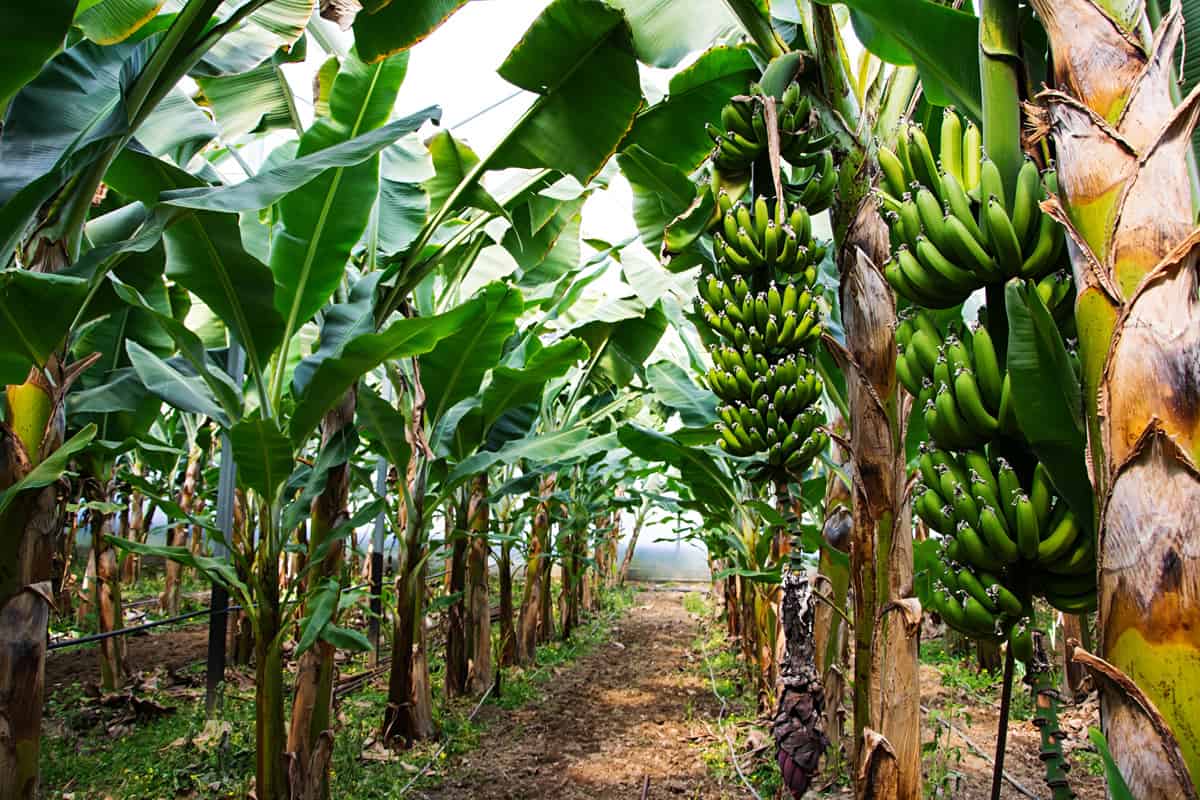
As long as a banana tree has space, it will spread and create new daughter banana plants. According to experts, if you plant a banana tree a few feet from other plants, the possibility of spreading rises.
Generally, banana trees respond best to open areas, allowing them to form new plants and grow plenty of delicious fruit. They can become overbearing to other vegetation.
For example, a common concern is banana trees spreading beyond property lines. If you grow a banana tree next to your neighbor's yard/fence, there's a chance another one could shoot up from the ground in their garden.
The sheer size of a single banana tree is also a factor to remember. Your tree could easily top out at 20-40 feet and have a spread between 10-30 feet.
Planting your banana trees six to 10 feet away from a property line might be best to avoid spreading.
Especially in the tropics, it's not uncommon to see banana trees fill a garden on their own. This fruiting species loves to expand its family, which can be a pro and con depending on who you ask.
Are Banana Plants Invasive?
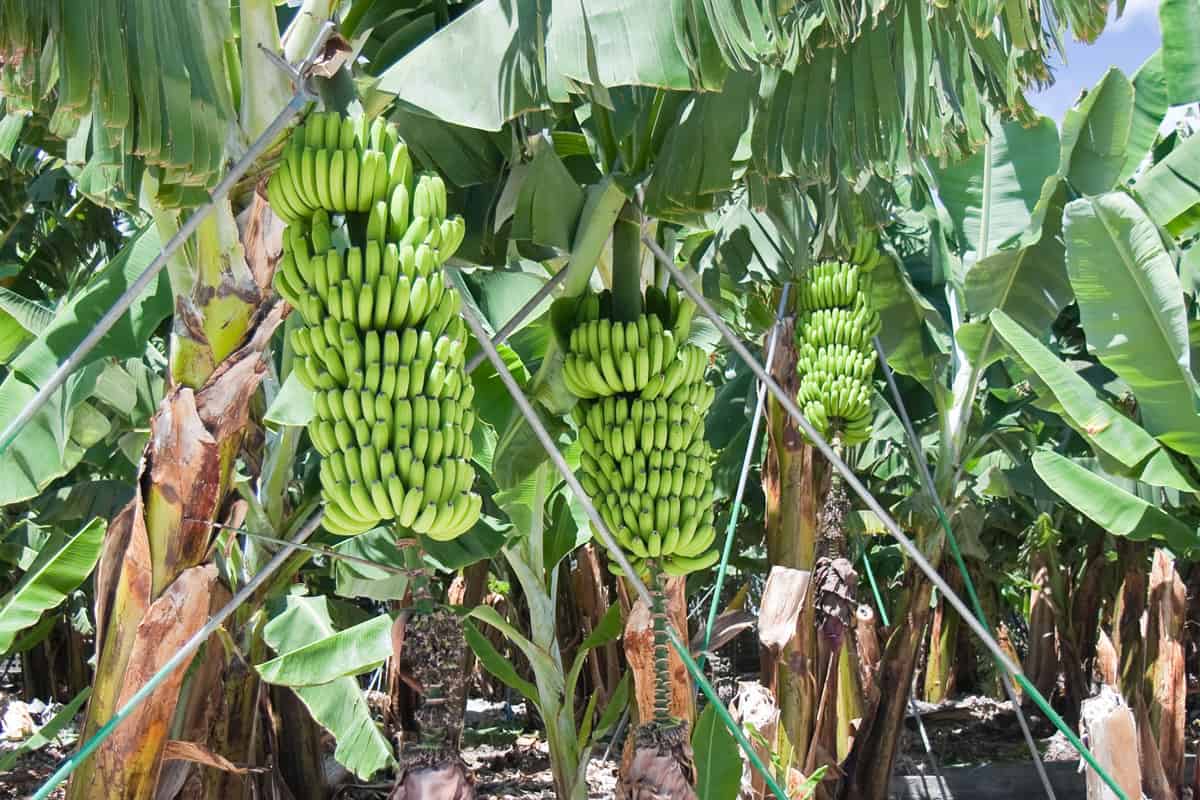
Although they grow quickly and can multiply, banana trees/plants are not considered invasive. Banana trees have root systems that grow up to five feet deep and spread up to 16 feet horizontally.
That is pretty standard for larger trees, making your banana pretty harmless. However, you don't want to let your banana tree encroach on other plants, as that's when they will compete for water, nutrients, etc.
Because they're asexual, banana trees can sometimes get a bad rap. Yes, the fruiting tree can grow over 40 feet tall with a 30+ foot spread, but it won't take on aggressive or invasive behaviors.
Banana trees, if given enough space, are very peaceful growers, often finding alternative routes that don't damage structures or other plants.
Again, that doesn't mean wild banana trees won't start to get into other plants' business, but they don't have invasive tendencies. Their roots are not nearly deep or broad enough to be considered invasive-growing.
To Wrap It All Up
Whether you have a banana tree growing in your yard or want to develop one, it's always good to know how they reproduce. We found that bananas are not seeds, meaning they don't spread by seed reproduction.
Instead, bananas form rhizomes or "suckers" from the parent plant, which turn into independent banana plants when ready. You can expect a banana plant to multiply independently, as it is asexual.
The seeds inside bananas look like tiny black dots and serve no purpose. They cannot be used to grow a new banana plant.
Curious about more garden topics? Read these posts!
Bananas About Banana Trees: The Ultimate Guide Collection

